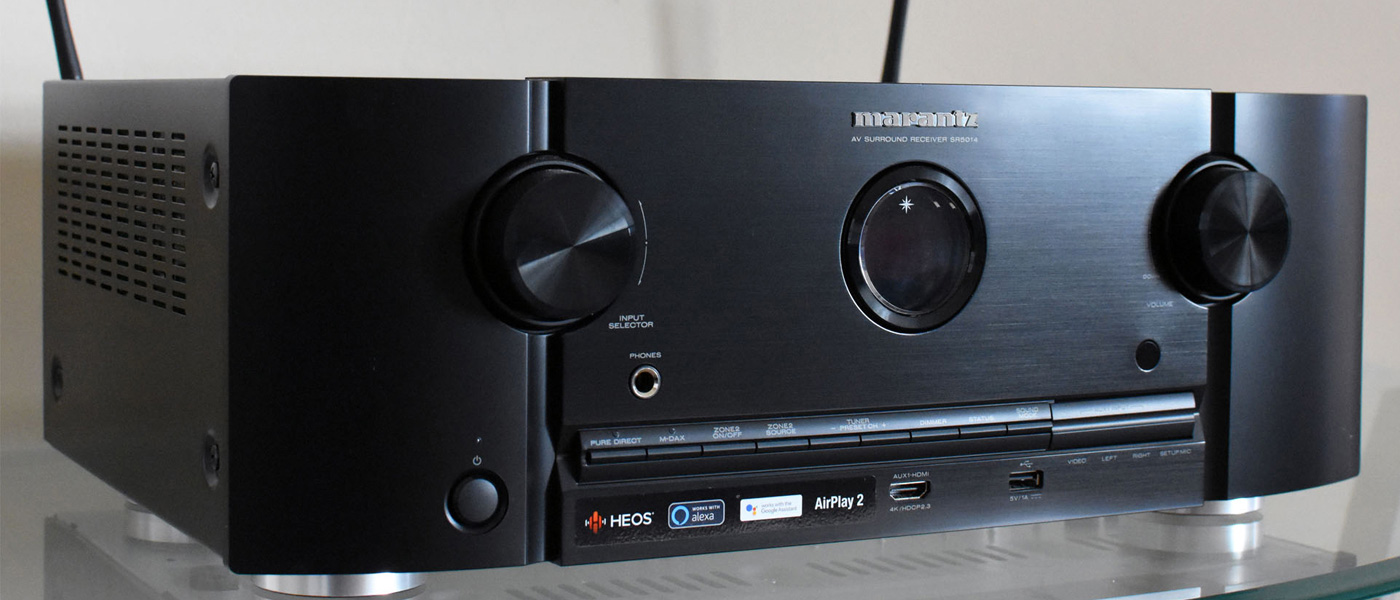HDMI 2.1 is just around the corner and with it will come a lot of obsolete receivers. Thanks to NAD’s Modular Design Construction, one can simply swap out a circuit board to enable the latest tech in the T 777 V3. Right now, for $2499, it delivers 80 watts-per-channel with seven amplifiers, Dolby Atmos, Dirac Live Room Correction, and 4K video passthrough. Streaming aficionados will enjoy BluOS and its vast universe of content.
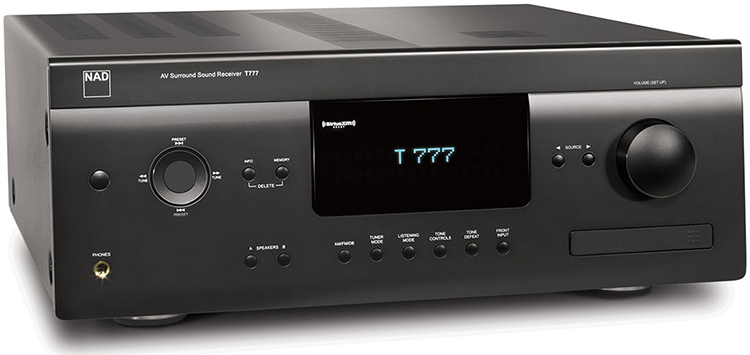
NAD T 777 V3 AV Surround Sound Receiver
- 80 watts-per-channel (seven channels driven)
- Pre-outs support up to 7.1.4 Dolby Atmos
- Two sub outputs, six HDMI 2.0a inputs
- 4K video passthrough, 4:4:4 at 60Hz
- Dirac Live Room Correction
- BluOS module for network streaming
- High-end build quality
NAD knows it’s next to impossible to prevent receiver obsolescence; or is it? Looking at the back of the flagship T 777 V3 AV Surround Receiver reveals, one sees not a mess of useless jacks, but five card slots that offer the latest connectivity, along with multi-channel inputs, two sub outs, and two tape loops. And all those cards can be replaced to add and upgrade features. So, with that fear allayed, let’s check out what it can do today. There’s plenty of power, 80 watts-per-channel by NAD’s honest power rating. They tend to come in low; I suspect I would measure higher numbers if I had the proper test gear. And in my recent review of the T 758 V3, its 60 rated watts had no trouble driving my four-ohm Axiom speakers. Seven amp channels support Dolby Atmos in a 5.1.2 configuration, or by using the supplied pre-outs, 5.1.4 or 7.1.4 is possible. Six HDMI 2.0a inputs accept high-bandwidth signals at Ultra HD resolution with 10-bit color up to 4:4:4 at 60Hz. And BluOS is included for streamed content. Oh, and did I mention Dirac Live? That superb room correction software is also included along with the obligatory setup mic.
Secrets Sponsor
A few weeks ago, I reviewed the T 758 V3 and was impressed by its amazing performance for the money. The T 777 V3 has more of everything that makes that receiver great. Let’s take a look.
Full Disclosure Power (7 channels driven):
7 x 80W
IHF Dynamic Power:
160W @ 8 ohms, 260W @ 4 ohms
Total Harmonic Distortion at rated power:
<0.08%
IM distortion at rated power:
<0.08%
Damping Factorg:
>60 @ 8 ohms
Input Sensitivity and Impedance:
1.15V (ref. 8 ohms, volume at 0dB)
Frequency Response:
±0.8dB (1kHz, 20Hz-20kHz)
Signal to Noise Ratio:
>92dB (rated power @ 8 ohms, A-WTD), >82dB (1W @ 8 ohms, A-WTD)
Idle Power:
70W
Standby Power:
<0.5W
Dimensions (WxHxD):
17 1/8” x 6 13/16” x 16 3/4”
Weight:
45.2lbs
Warranty:
Two years
MSRP:
$2499
Company:
SECRETS Tags:
NAD T 777 V3 AV Surround Sound Receiver, AV Receiver, Surround Sound, Dolby Atmos, Dirac Live, Ultra HD, AV Reciever 2018 Review
- NAD T 758 V3 AV Surround Sound Receiver Review
- NAD M17 & M27 Masters Series Surround Separates Review
- NAD M32 Direct Digital Amplifier Review
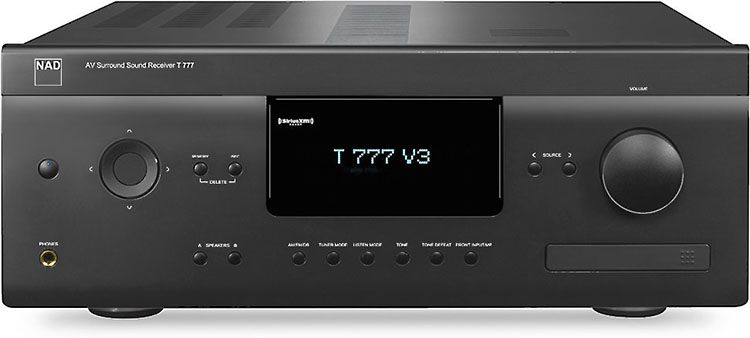
Since this review follows closely on the heels of my time with the T 758 V3, comparisons are unavoidable. Here it is in a nutshell – the T 777 V3 has more power, more connectivity, and more upgradability. It’s just… more. NAD’s honest power rating is 80 watts-per-channel with seven channels driven to .08% THD. I don’t have the ability to measure this but given the T 758 V3’s ability to drive my large four-ohm speakers to ear-bleeding levels while barely exceeding room temperature, I have no reason to doubt NAD’s claims. There are likely no speakers that cannot be safely and competently driven by the T 777 V3.
The seven amp channels are Class A/B tuned for high current and low distortion, supported by a toroidal transformer. Video is handled by a VM300 module and can pass Ultra HD signals in 4:4:4 format up to 60Hz. No processing is performed, the material is simply passed through unaltered from source to display. Processing assistance is provided by an ARM chip that enables streaming and video management duties. The T 777 V3 is fully compatible with BluOS and can play content through the sixth of nine assignable inputs. It also works with all Bluesound products as part of a whole-house audio solution. The module comes in the form of a USB dongle that plugs into the back.
Physically, the T 777 V3 looks identical to the T 758 V3 and is in fact, the same width and height while being about an inch deeper. It also weighs 12 pounds more thanks to that toroid and the additional card cages. The front panel is simple and contains just a large volume knob; buttons for source selection, menu, and listening mode; and an information display. To its left is a nav pad that allows many settings to be made without turning on your TV or projector. A small cover on the right opens to reveal RCA, optical, and HDMI inputs.
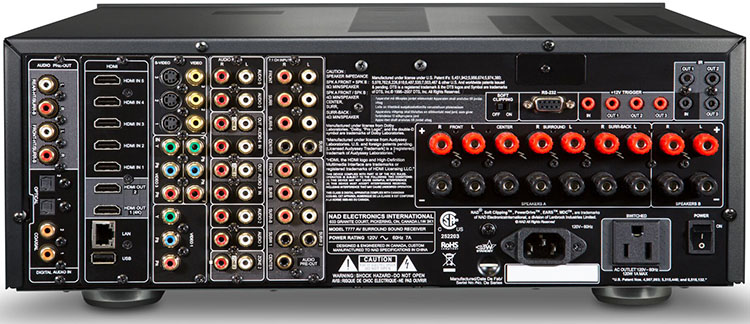
The back panel is a card-cage design with five slots that supports NAD’s Modular Design Construction philosophy of “planned evolution” rather than “planned obsolescence.” You will have little trouble upgrading and updating the T 777 V3 for a long time to come. While I don’t believe any product is truly future-proof, this receiver comes about as close as it can to that elusive description.
The AM230 digital audio board houses coax and digital audio inputs plus line outs for four more height channels should you want to install a full 7.1.4 Dolby Atmos system. HDMI inputs number six, five in back and one in front, along with two outputs. All are version 2.0a with HDCP 2.2, ARC, and CEC. Two additional cards carry all the analog inputs and two tape loops, something you won’t find too often these days. You also get multi-channel inputs and pre-outs for use with an external power amp. Control options are extensive with RS-232, an IR hub (one in, three out), and three 12v trigger outputs.
The photo shows all five slots populated with cards but my sample did not have the analog video board installed. That one costs extra though I can’t imagine too many users opting for it. By default, the four cards I mentioned in the previous paragraph ship with the unit.

The remote is a significant upgrade from the T 758 V3, mainly because it’s not only backlit, but motion-sensitive too. Just picking it up engages a bright blue glow behind all the buttons. It features discrete keys for power and source. Menu navigation is the middle, then you get a number pad and transport keys. It’s a learning remote too, capable of controlling seven additional devices with macro ability.
In my recent review of the T 758 V3 receiver, I spoke at length about Dirac Live and NAD’s implementation of it. One thing I failed to point out is that in that product, and in the T 777 V3, the LE version is included in the box. If you want the full package, it’s $99 extra. Both versions allow you to edit your target curves, but the Full package provides correction from 20Hz to 20kHz versus LE’s 20-500Hz. In either case though, you get full frequency impulse response correction. This, in my opinion, is Dirac’s big draw over Audyssey and other similar correction solutions. I talked about the effect of this in my T 758 V3 review and in my CES 2018 coverage where I enjoyed an amazing two-channel demo. To refresh your memory, impulse response correction involves not only setting channel delays properly, but also optimizing the phase of the individual drivers in each speaker cabinet. Keeping all transducers in phase is a concept that’s been proven in high-end speakers from the likes of KEF and Thiel who place tweeters on-axis with midrange and bass drivers to create a single-point sound source. Ultimately, quality is best when the sound from every driver in the system reaches your ears at once.
NAD includes a free download of the Dirac software plus a USB microphone in the box. To run the correction routine, you’ll need a laptop computer and a Wi-Fi network to sync everything up and run the measurements.
The T 777 V3 has sufficient speaker outputs for a 5.1.2 setup so I used a pair of PSB Imagine XA Dolby Atmos modules placed atop my Axiom LFR1100 towers as front height channels. I did not wire the rear baffle so they functioned as M100s for this review. The remaining channels were handled by a VP180 center and two QS8 surrounds. The receiver’s binding posts will accept every kind of connector including my chunky locking bananas. Once I tightened their collars down, solid contact was assured.
My single source component was an OPPO UDP-203 universal player. I wired it via HDMI to the receiver’s first input and connected a coax cable for jitter-free two-channel music. I always find a little better-quality listening that way as HDMI sometimes introduces minor timing errors. I wasn’t able to test 4K video this time as JVC asked for their DLA-RS640 back. I made do with my Anthem LTX-500 1080p display.
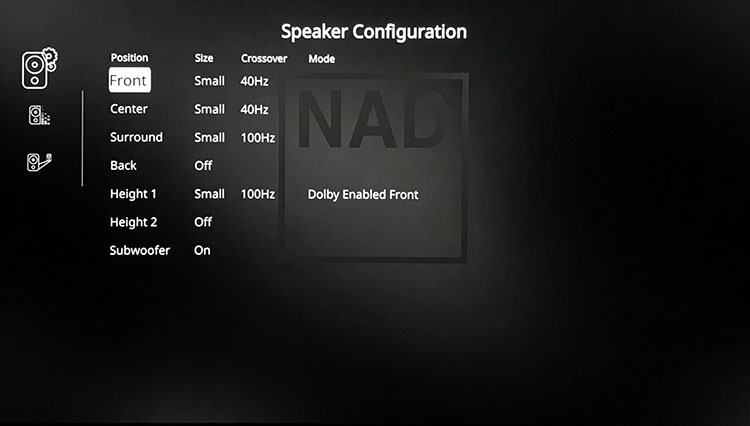
To configure the extra speaker modules for Dolby Atmos, I had to assign amps to them in the setup menu. That’s a fairly simple matter. Start in Amplifier Setup where you can direct the extra amps to rear surround, front height, or rear height. You can also use them for additional zones if you like. Then in Speaker Configuration, set the height channels to Dolby Enabled Front.
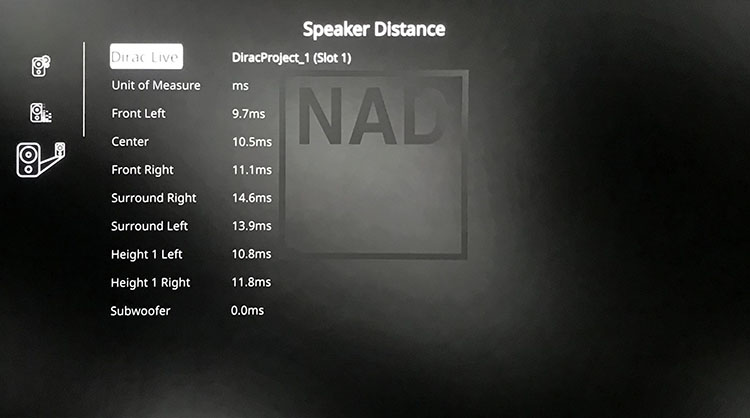
Since Dirac only applies frequency and impulse response correction, and sets levels, you’ll have to input the crossovers yourself. I used my usual values of 40Hz for the front three and 100Hz for the surround and height channels.
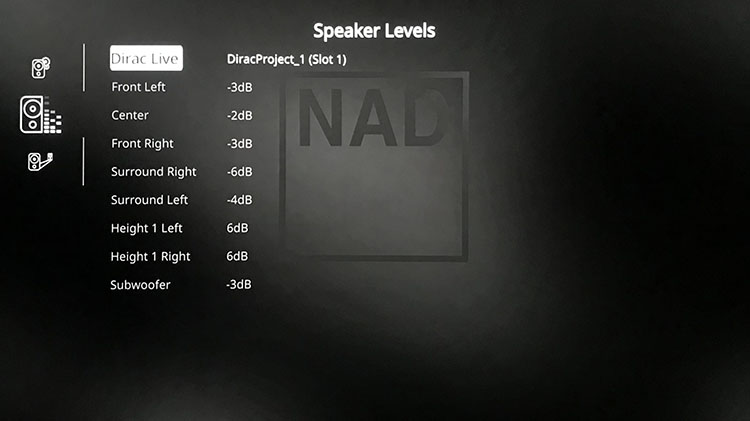
The next step is to get the T 777 V3 on the Wi-Fi network. For that, I followed the instructions in the BluOS app. That was followed by a firmware update which took about 10 minutes. Once complete, I installed the Dirac Live software and run the room correction procedure. Following the directions and performing nine measurements took me about half an hour. Everything worked exactly like it did for the T 758 V3. I wondered if I might be able to download the same correction file from that receiver into the T 777 V3 but the projects are specific to each product. I therefore went through the same measurement layout as before, and got identical results. If you’d like to see my graphs, please refer to the T 758 V3 review.
With room correction in place, it’s time for some listening!
With this review coming hard on the heels of my T 758 V3 evaluation, it’s hard not to make comparisons. I realize that a four-week gap is too long to make a fair back-to-back in terms of sound quality, but I decided to watch the same movies and listen to the same music to see if the T 777 V3 made me feel any different. Obviously, they will have similar sound characteristics but there is always an intangible something that appears when listening to really good audio gear.

Wonder Woman has a rich and dynamic Dolby Atmos encode and even though I had just two additional front height channels, the effect was easily perceived. There’s surround sound, then there’s immersive sound. The latter pulls you into the scene and delivers audio the way on-screen characters experience it. When Diana and Steve walk into a large London clothing store, the murmur and bustle of shoppers immediately enveloped me in a way not possible with just 5.1. That extra height information is subtle but it does enhance the film. Bass effects in the final showdown between Diana and Aries were so strong, they rattled the NAD’s remote backlight into action. I actually had to turn it over to avoid distraction.
Sticking with the super-hero theme, I cued up Batman v Superman, Dawn of Justice. I was particularly drawn into an underwater scene where I truly felt like I was diving for treasure. The T 777 V3 sounds amazing here and I was inspired to add more speakers to my theater for even better Atmos. Again, the bass was superbly controlled as it pounded out the action.
Secrets Sponsor
Jigsaw is a love-it-or-hate-it kind of film but it has plenty of opportunities for Atmos to show its mettle. In one scene, two hapless victims find themselves in a silo with grain pouring in around them as they are buried alive. I was nearly buried myself in the immersive effect caused by a simple hiss, properly placed. When mixed correctly, Dolby Atmos enhances the experience just as much as things like Ultra HD and HDR.
One note about Dirac Live: I tried watching with and without correction and was surprised at how good things sounded with it off. I still prefer the assistance, especially for the bass but the T 777 V3 delivers an amazingly balanced sound all by itself. While I would normally use Dirac, this receiver doesn’t make it a must like other products I’ve heard.
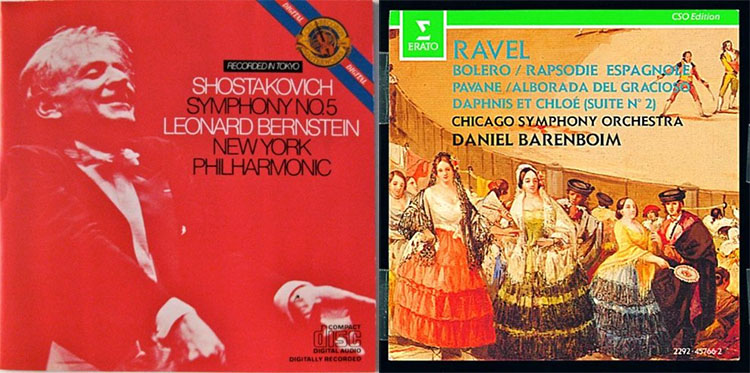
To check out the T 777 V3’s ability to play a crappy recording of a great performance, I turned to the New York Philharmonic and Shostakovich’s Symphony No. 5. The fidelity is fairly harsh and tinny with little real bass or hall reverb to help matters. Despite those flaws, the NAD had no difficulty rendering the finest details and bringing the brass and woodwinds to the fore when appropriate. Strings had a clean sound that was never mushy and I enjoyed the CD thoroughly.
A much better recording is that of Daphnis and Chloe, performed by the Chicago Symphony. Far more love was given to this exquisite performance. It just shimmers and sparkles with textures found only in French Impressionist music. Ravel was a master, not only of this style, but of orchestration and that expertise shows through, thanks to the T 777 V3.
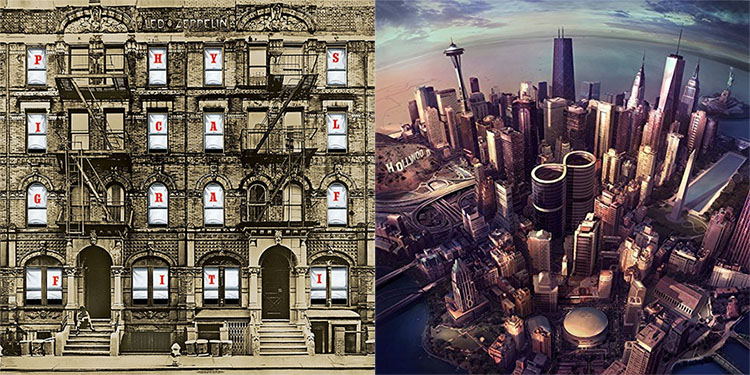
My real epiphany happened when I spun my copy of Physical Graffiti from Led Zeppelin. My favorite track is In My Time of Dying, a blues classic and a Jimmy Page performance that will never be topped. I’ve heard this song a hundred times but the T 777 V3 introduced me to Jimmy’s amplifier in a whole new way. My Axiom towers were literally turned into a guitar amp as I could hear and feel every bit of that crunchy distortion. The NAD succeeded in creating a texture where I didn’t expect it. Tactility doesn’t only come from subwoofers, apparently. After listening a little longer, I was inspired to do something I hadn’t done in many years, remove my speaker grills. The difference was subtle but audible, and it drew me even further into the music. This is Led Zeppelin at their finest and I’ve never heard this CD sound better.
I kept going with Foo Fighters’ Sonic Highways. These talented guys love their distortion too though here, it’s a little tighter and cleaner, some might say more processed but I love it just the same. I changed my front speakers to Large in the OSD to remove the sub from the equation and found I loved it even more. My LFR1100s are capable full-range towers and the T 777 V3 made them shine. By the time I finished my long, wonderful afternoon of listening, I came to the realization that this receiver is easily the best NAD receiver I’ve heard to date. “Wow” just doesn’t do it justice.
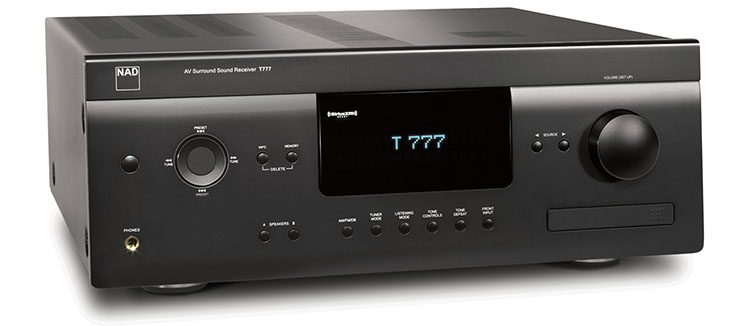
The NAD T 777 V3 AV SURROUND SOUND RECEIVER delivers high-end performance at a mid-fi price. With easy upgradeability, it has few equals at this or any price point.
- Phenomenal sound, rich in dynamics and detail
- Dirac Live correction is very effective at fixing room issues
- Plays loud and has no trouble with low-impedance speakers
- Monolithic build quality
- I can’t imagine anything that could make it better
I’ve talked in the past about the divide between receivers and separates. I’m a separates snob for sure and I really enjoy the power and in-your-face presentation of my Emotiva amplifiers. The NAD T 777 V3 is the first receiver I’ve ever heard that challenges that snobbery. In all honesty, if someone switched my gear and I walked into the room blindfolded, I doubt I could tell anything had changed. This receiver is truly that good. At $2499, it certainly qualifies as a flagship. But it should be noted that there are high-end receivers that cost more without delivering superior sonics.
Feature-wise, it may not have dozens of listening modes or a zillion streaming options but with BluOS, what more could one need? There are thousands of music and content feeds out there, all at your fingertips thanks to the app. And with Dirac Live room correction, it has a tweakability that easily outpaces other solutions. After hearing it and the T 758 V3, I’m just looking for an opportunity to replace my trusty but aging Integra processor and its Audyssey system.
The NAD T 777 V3 AV Surround Sound Receiver can easily compete with and replace separates. It will drive demanding speakers and has more than enough headroom to play loud without distortion. HDMI 2.0a supports the latest 4K video with 10-bit color and HDR. And you needn’t worry about obsolescence. Modular Design Construction makes the T 777 V3 about as future-proof as any product can be. It might even be the last receiver you ever buy. Once you’ve heard it, I think you’ll agree. It earns my Highest Recommendation.


